Cube’s Stereo Hybrid 160 HPC SLT 750 27.5 electric mountain bike is the German brand’s longest 160mm-travel, enduro race-ready offering.
It uses 27.5in wheels front and back and this HPC carbon fibre framed SLT model is the range-topper, retailing for £8,499 / €8,499.
It’s fitted with Fox Factory-level 38 forks and Float X shock, and a Transfer dropper post. Elsewhere, there’s SRAM’s top-tier XX1 Eagle AXS drivetrain and Magura brakes.
Powering the Hybrid 160 is Bosch’s latest-generation Performance Line CX electric mountain bike motor, paired with the brand’s 750Wh PowerTube battery that’s stored inside the down tube.
On paper, the Stereo looks promising thanks to a selection of top-performing drivetrain and suspension parts, the powerful Bosch motor and a high-capacity battery.
However, its geometry, raw-feeling ride and several spec compromises reduce its ability to tackle the gnarly, fast and rough enduro-style terrain Cube claims it has been designed to excel in.
Cube Stereo Hybrid 160 HPC SLT 750 27.5 frame, suspension and motor
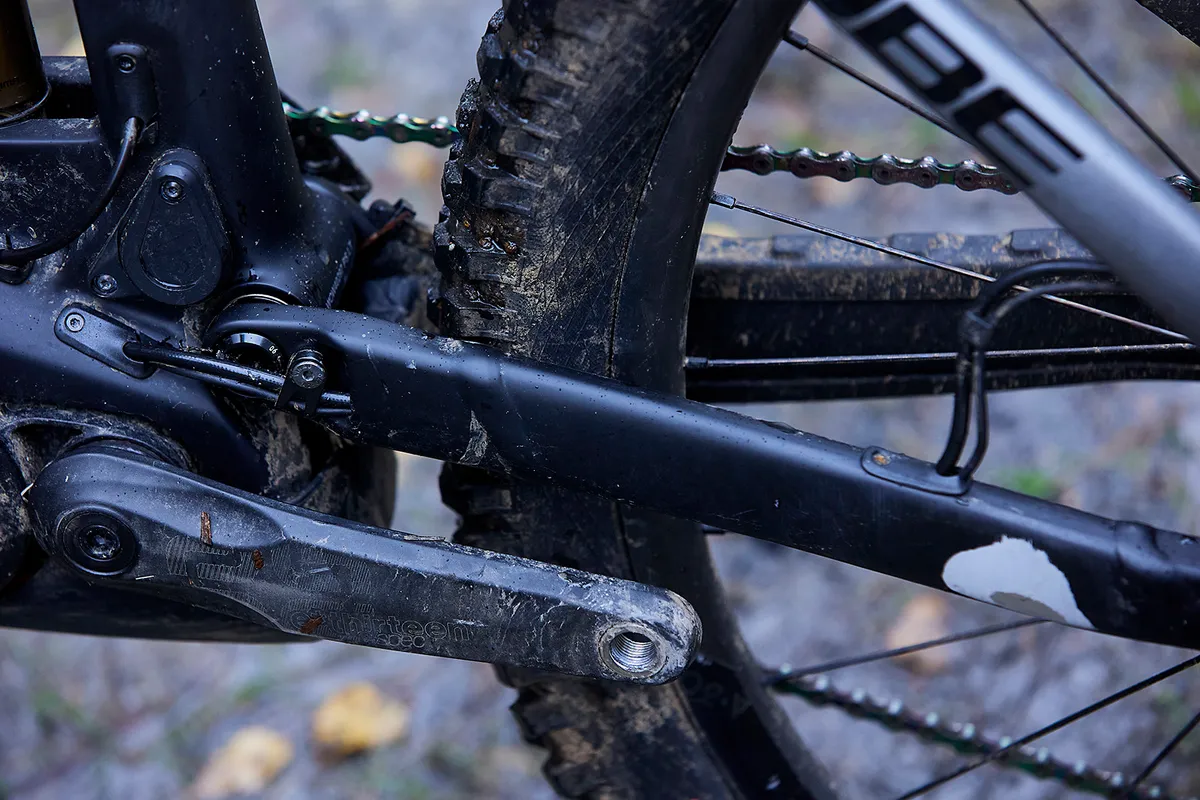
The frame’s front triangle is made from Cube’s C:62 Monocoque Advanced Twin Mold Technology carbon fibre – the brand’s highest-spec carbon material. The swingarm is constructed from 6061-T6 aluminium.
Its cables are routed internally via the headset’s top bearing cap, rather than through ports on the side of the down tube. In removing the down tube’s ports, Cube claims the frame is stronger, but looks sleeker too.
The headset also serves as a steering lock limiter to help reduce the chances of damage to the forks, frame or handlebars in the event of a crash.
There’s chain slap protection on the driveside chainstay and a protective guard around the bottom of the motor. The battery has a single-button removable cover that, when off, reveals the battery’s locking mechanism.
The underside of the down tube is cut out for battery removal and installation. A single set of bottle cage bosses sit on the top of the down tube.
SRAM’s Universal Derailleur Hanger (UDH) is fitted, while the rear axle uses Boost 12x148mm spacing.
Suspension kinematics
According to Linkage Design, the 160mm-travel Horst-link style suspension has a 3.0 to 2.15 leverage ratio, and is 28.3 per cent progressive.
This level of progression makes the Stereo’s rear suspension well suited to coil-sprung shocks, but should also work well with air-sprung shocks, as long as there aren’t too many volume-reducer spacers installed.
The leverage rate’s progression is fairly linear, but the curve does flatten slightly towards the end of the bike’s travel to compensate for the quick ramp up of air springs allowing full travel.
Anti-rise (how much braking forces extend or compress the suspension) sits between 55 per cent and 64 per cent through the bike’s travel. This means its suspension is more likely to extend than compress when braking, and in theory should remain more active.
Anti-squat (how much the suspension resists compression or extension from pedalling forces) in the lowest cassette sprocket is 85 per cent at sag and drops to 35 per cent at bottom-out. This means the suspension will be more likely to bob when the rider is pedalling than remain static, but can also mean the bike suffers less from pedal kickback.
Cube Stereo Hybrid 160 HPC SLT 750 27.5 battery and motor
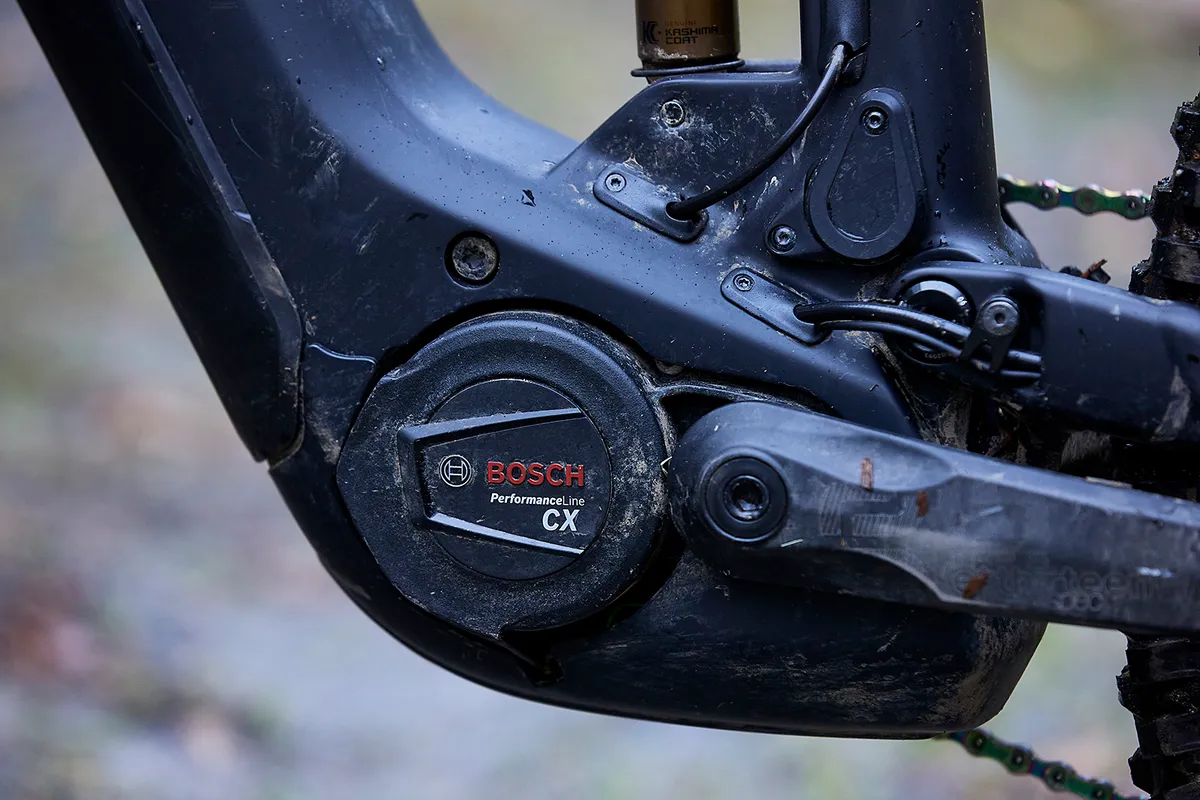
Fitted to the Stereo Hybrid is Bosch’s Performance Line CX Smart System motor. This offers 95Nm of peak torque and 250W of nominal power. It's paired with the brand’s high-capacity 750Wh PowerTube battery.
Cube has specced the Bosch Kiox 300 colour display. This is attached to the handlebars using its own mount that positions it above the stem. The standard Smart System LED remote also features.
Instead of a rubber cap usually seen on Bosch charge ports, the Stereo Hybrid’s port uses a door that pivots on a single bolt.
Like all Bosch Smart System bikes, the Cube can connect to Bosch’s eBike Flow smartphone app via Bluetooth, where ride mode (Eco and Turbo) outputs can be adjusted. Other metrics, such as ride distance, power and time are all also recorded.
Cube Stereo Hybrid 160 HPC SLT 750 27.5 geometry
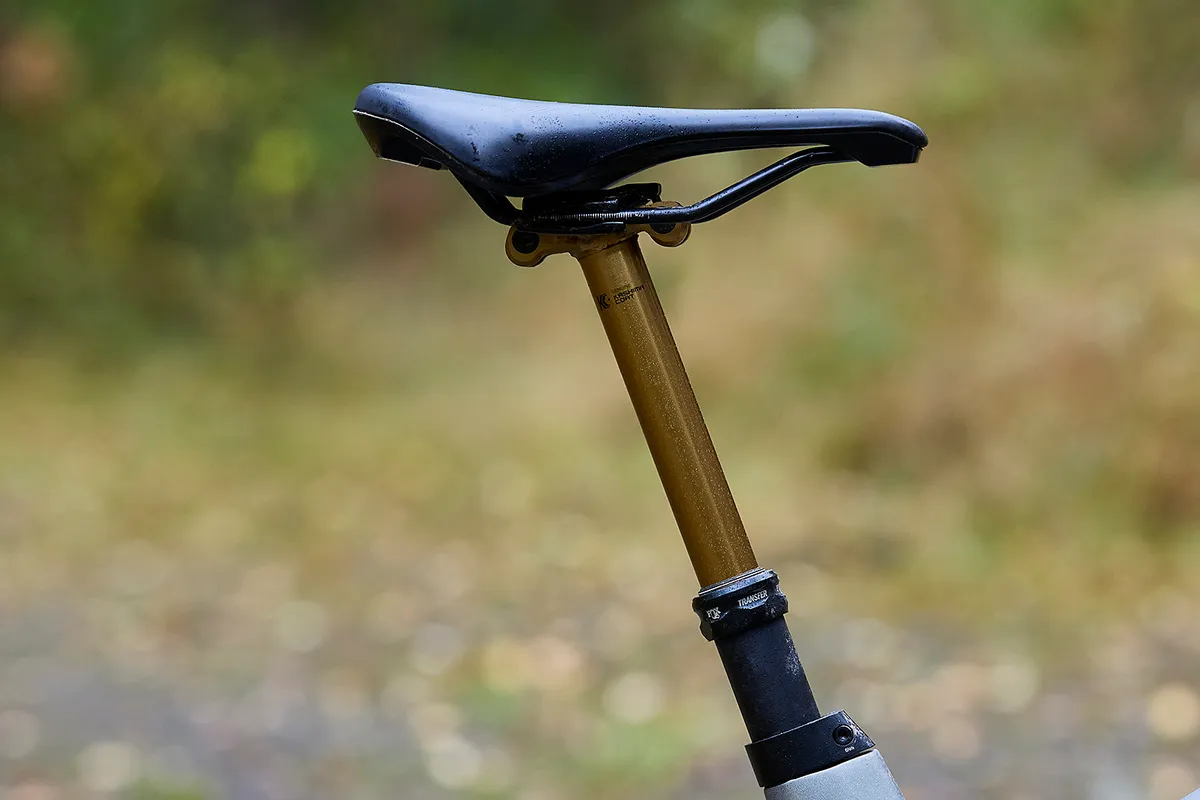
The Stereo Hybrid is available in three sizes, from medium to extra-large.
For what Cube claims is a race-ready enduro bike, its 65-degree head tube angle is a bit of an outlier, sitting at the steeper end for bikes designed for this type of riding. Enduro-ready electric mountain bikes generally have head angles at 64 degrees or slacker, and anything over that number is considered steep.
Elsewhere, the geometry figures are more business as usual. The size large has a 479.8mm reach and a 630mm top tube, while the seat tube angle is 76 degrees.
The size large’s wheelbase is 1,256.2mm and the chainstays are 441.5mm across the three-size range. Bottom-bracket height is 335mm, which is quite high for a 27.5in-wheeled bike with this much travel. For comparison, the 29in Whyte E-160 RSX has a 326mm bottom-bracket height.
| | M | L | XL |
|---|---|---|---|
| Seat angle (degrees) | 76 | 76 | 76 |
| Head angle (degrees) | 65 | 65 | 65 |
| Chainstay (mm) | 441.5 | 441.5 | 441.5 |
| Top tube (mm) | 600 | 630 | 660 |
| Bottom bracket height (mm) | 335 | 335 | 335 |
| Wheelbase (mm) | 1,224.7 | 1,256.2 | 1,288.5 |
| Stack (mm) | 616.1 | 626.9 | 643.3 |
| Reach (mm) | 453.4 | 479.8 | 504.5 |
Cube Stereo Hybrid 160 HPC SLT 750 27.5 specifications
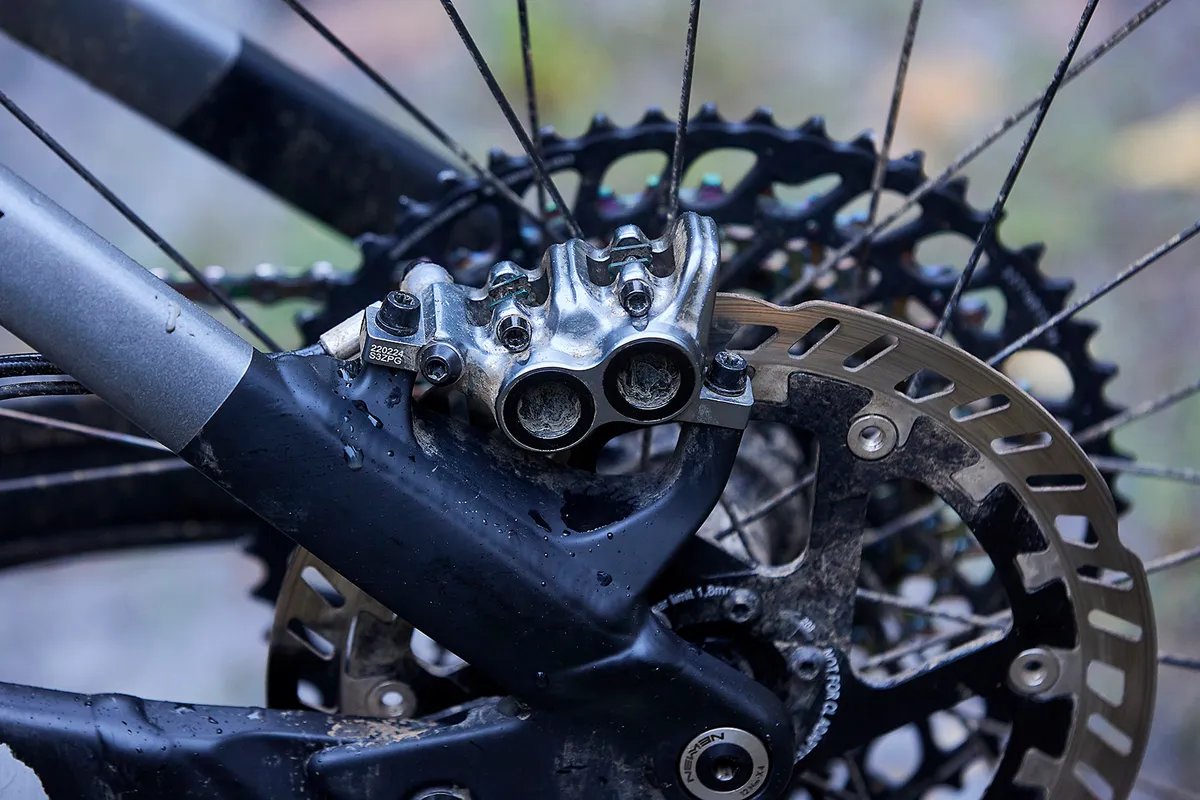
Sitting atop the Stereo Hybrid hierarchy, it’s no surprise this SLT model is fitted with some of the industry’s best components.
Damping duties are taken care of by Fox’s Factory units, with an air-sprung 38 GRIP2 damper fork and a Float X shock. These are matched with Fox’s Transfer post with 150mm of travel.
Magura’s four-piston MT7 brakes and chunky 203mm rotors are fitted.
SRAM’s XX1 Eagle AXS wireless electronic drivetrain features, including a 10-52t cassette and chain with the fancy-looking oil slick colourway. It has 165mm-long e*thirteen Plus cranks.
Cube-owned brand Newmen supplies the Carbon fibre Advanced SL A.30 ebike-specific wheels, which are wrapped in Schwalbe rubber, with a Super Trail Addix Soft Magic Mary up front and a Big Betty Super Trail Addix Soft at the back.
There’s a Newmen Advanced 318.25 carbon bar, a Cube ebike-specific Performance stem and Cube’s Acid Disrupt grips.
Without pedals, the size-large test bike weighed 24.17kg, which is relatively light for a full-power electric bike.
Cube Stereo Hybrid 160 HPC SLT 750 27.5 ride impressions
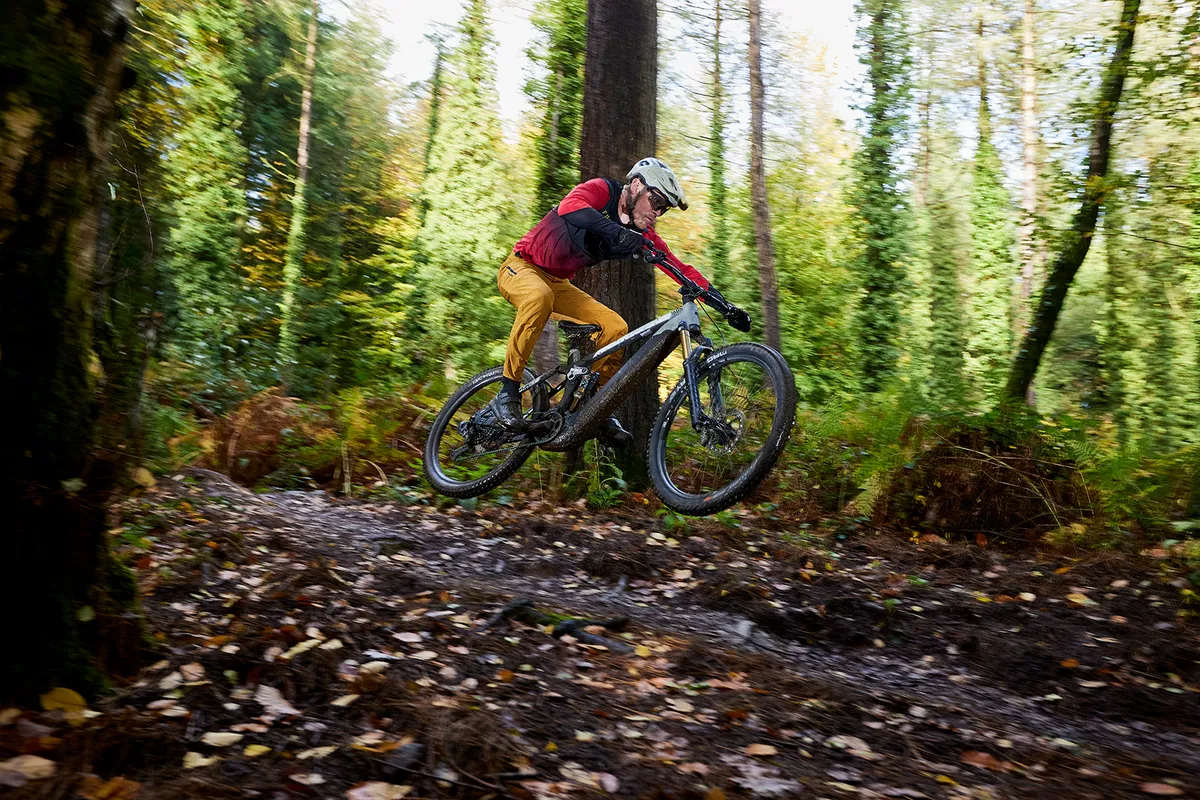
I tested the Stereo Hybrid 160 in Scotland’s Tweed Valley, home to the UK’s round of the Enduro World Series and national-level downhill events, along with the upcoming 2023 cross-country Mountain Bike World Championships.
I rode the bike on the trails used during the Enduro World Series event, but also rode purpose-built trail centre routes, and even ventured out into the Scottish Lowlands to get a handle on how well it performed in the backcountry.
Trail conditions ranged from dry and dusty to wet as a river, and everything in between.
Cube Stereo Hybrid 160 HPC SLT 750 27.5 setup
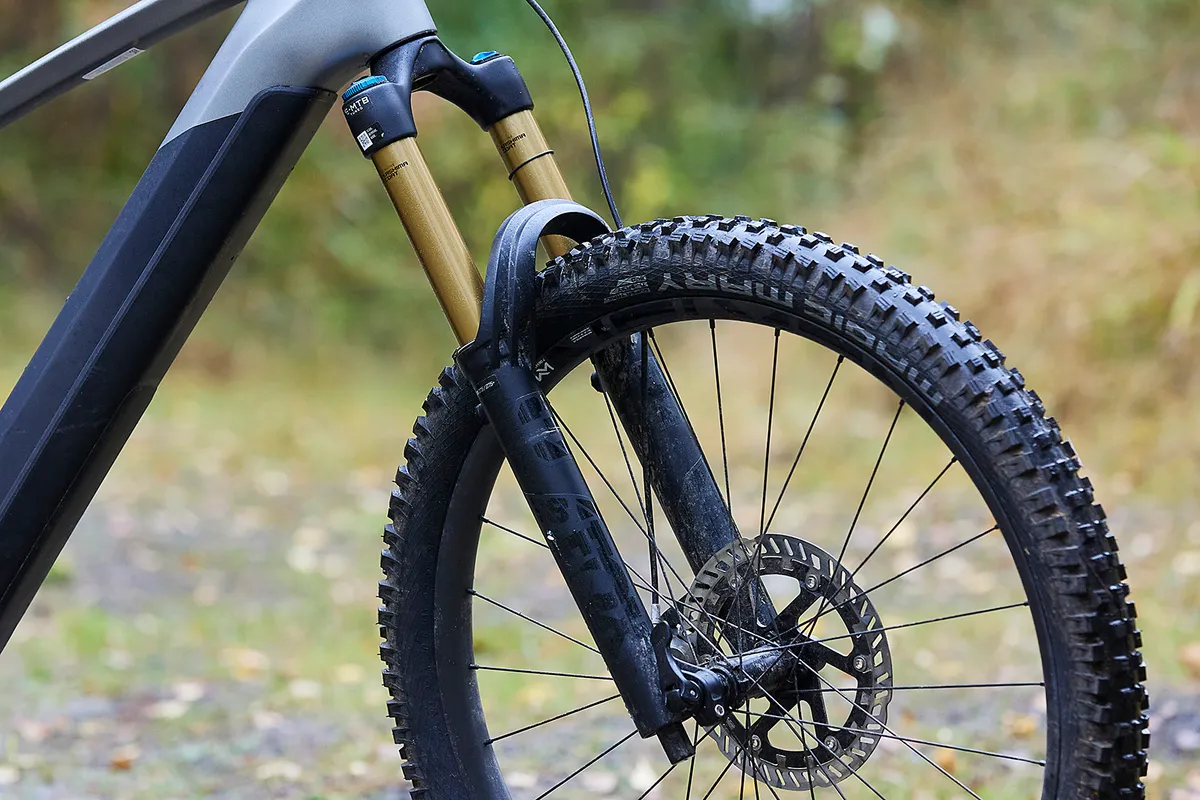
The Fox Factory suspension was easy to set up for my 76kg kitted-up weight.
The 38 fork was fitted with three tokens from the factory, which is my preferred number. I inflated the air spring to 98psi, giving 18 per cent sag, and fully opened all the external rebound and compression adjusters for my preferred settings.
Two volume-reducer spacers were installed in the rear shock – the pink 0.8in³ and the blue 0.1in³, taking the total volume reduction to 0.9in³, which I left installed for the duration of the test period.
I inflated the air spring to 160psi and fully opened the external rebound and compression adjusters. Set like this, the shock had 27.7 per cent sag, which felt good with the progressive kinematics and volume reducers.
Cube Stereo Hybrid 160 HPC SLT 750 27.5 climbing performance
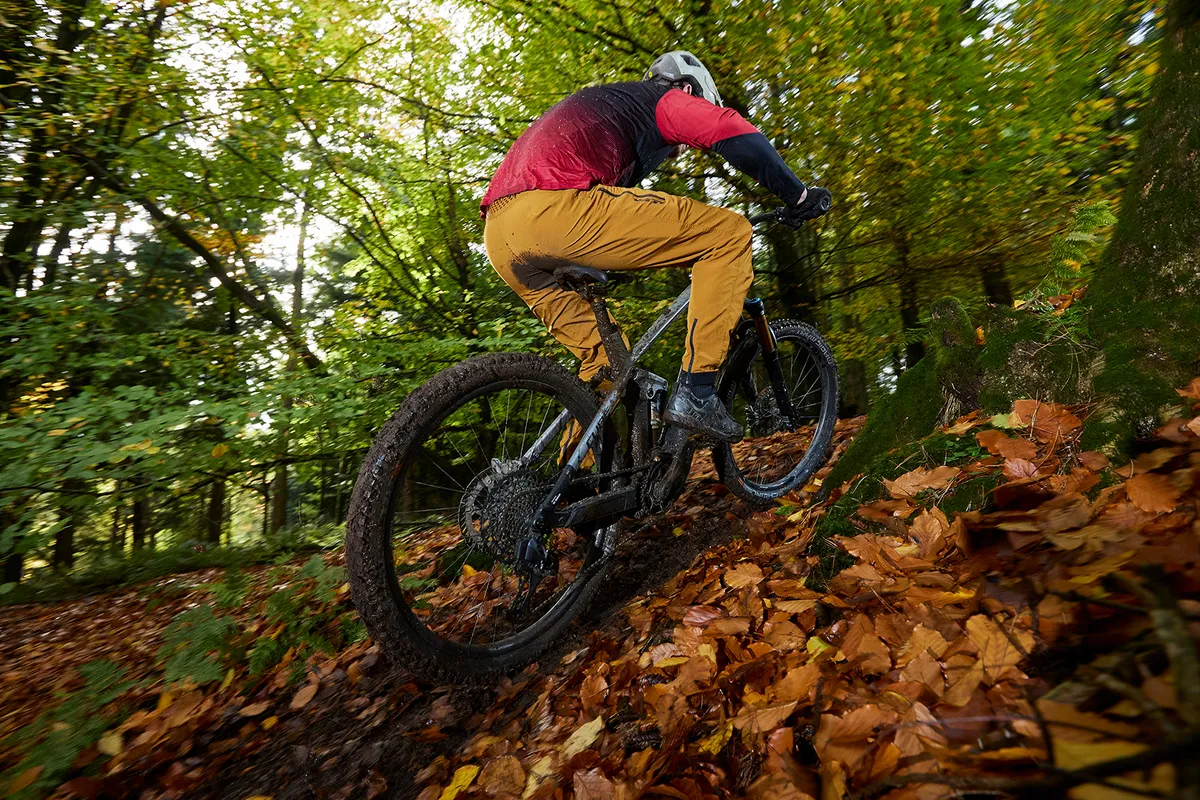
Thanks to the short-feeling front end created in part by the relatively steep seat tube angle, steep head angle and fairly short 630mm top tube, the Cube’s climbing position is upright.
This makes the handlebars and front wheel feel close to the centre of the bike and rider, where smaller movements have a bigger effect on its trajectory, grip and feel. The compact nature has its advantages, and makes the Stereo 160 a proficient climber.
The rider’s weight is well centralised, and as such is distributed evenly between the front and rear wheels.
On slippery, technical ascents, smaller, less exaggerated movements are needed to keep the bike in check. Increasing pressure to the rear wheel doesn’t cause the front end to go too light, and vice versa.
Equally, cornering is a speedy and agile affair and tight switchbacks are dispatched without drama or the need to muscle the bike about.
Of course, the flip side to this is that overall stability is reduced. Mistakes or poor weight placement have a larger effect on the bike’s trajectory, magnified by the shorter wheelbase.
Bump absorption
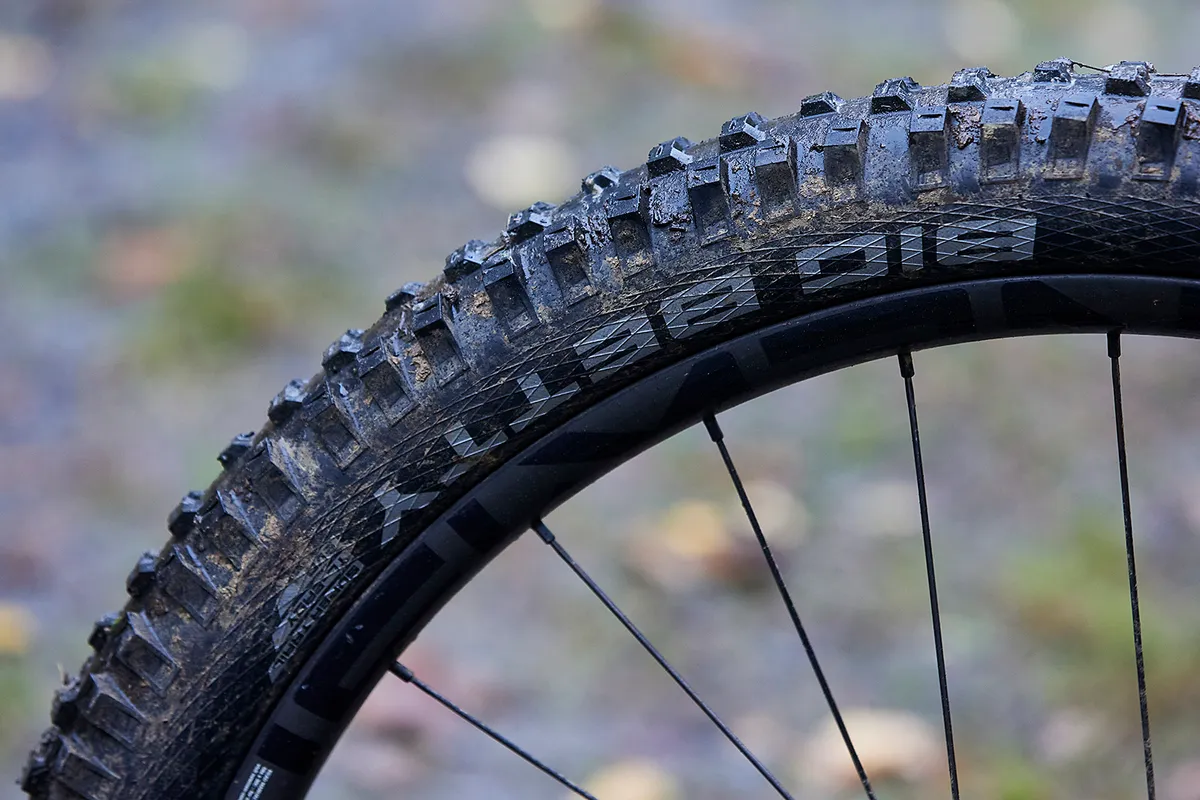
The Stereo’s suspension performance is impressive – small bumps are absorbed well, helping improve comfort and grip.
Thanks to the in-built progressiveness and air spring ramp-up, the already steep seat tube angle is well maintained as rider weight is biassed onto the rear wheel when gradients truly increase.
This is because extra sagging caused by the weight transfer is well resisted by the suspension, helping preserve the bike’s static geometry.
Schwalbe’s Big Betty rear tyre’s tread is aggressive and bites well into soft ground.
However, the higher tyre pressures needed to compensate for the thin sidewalls (more on this below) mean that hardpack or rock and root grip that relies on tyre deformation and rubber adhesion is compromised significantly.
Dropping the pressure helps improve low-speed grip, but then carcass roll becomes an issue on high-speed corners, reducing stability and making damage to the rims or punctures more likely.
Cube Stereo Hybrid 160 HPC SLT 750 27.5 battery life
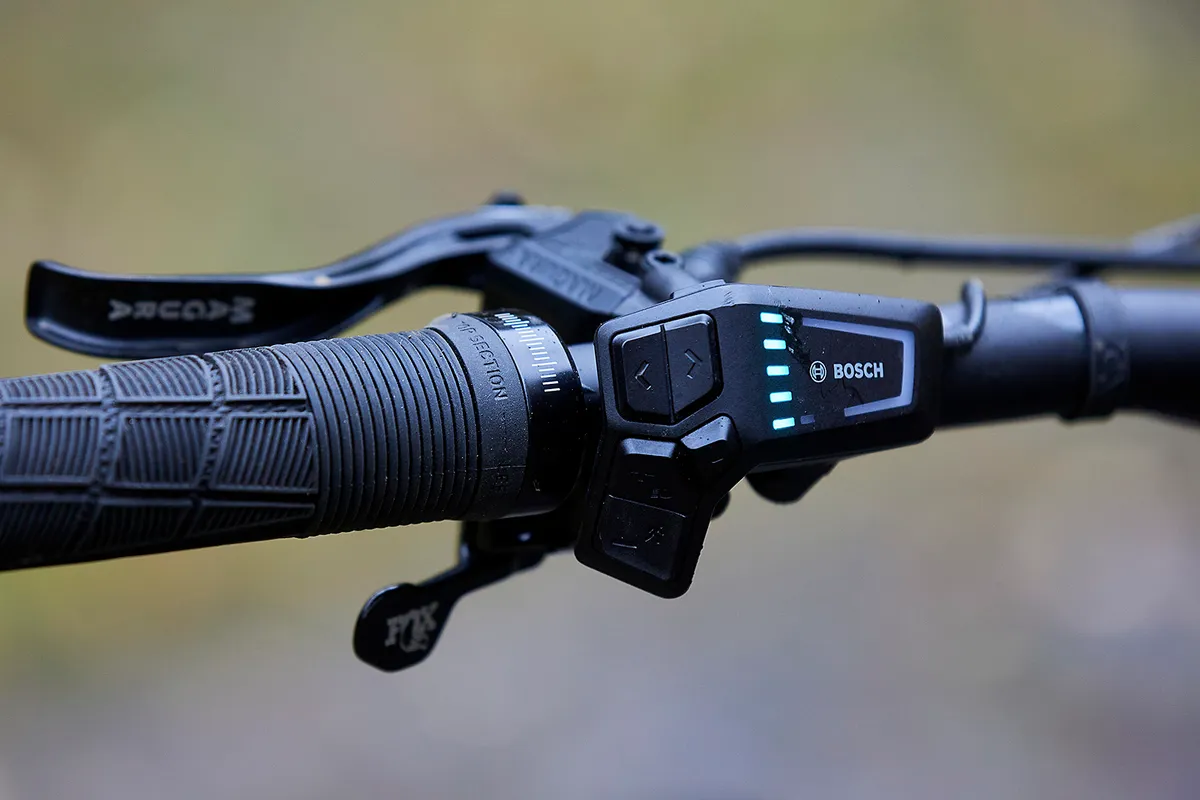
Bosch’s PowerTube 750Wh battery and Performance Line CX motor combine in an impressive package.
Battery life in Tour+ is good, and exceeding 2,000m of ascent on a single charge is possible. Eco mode in its stock setting is a little lacklustre, but turning support up in the eBike Flow app takes little time and improves it massively.
eMTB and Turbo modes are powerful and responsive, but that power draws significant current from the battery. Its range in the top power modes can be as low as 1,100m of ascent, but 1,500m is possible in eMTB mode if the bike is ridden carefully.
Cube Stereo Hybrid 160 HPC SLT 750 27.5 descending performance
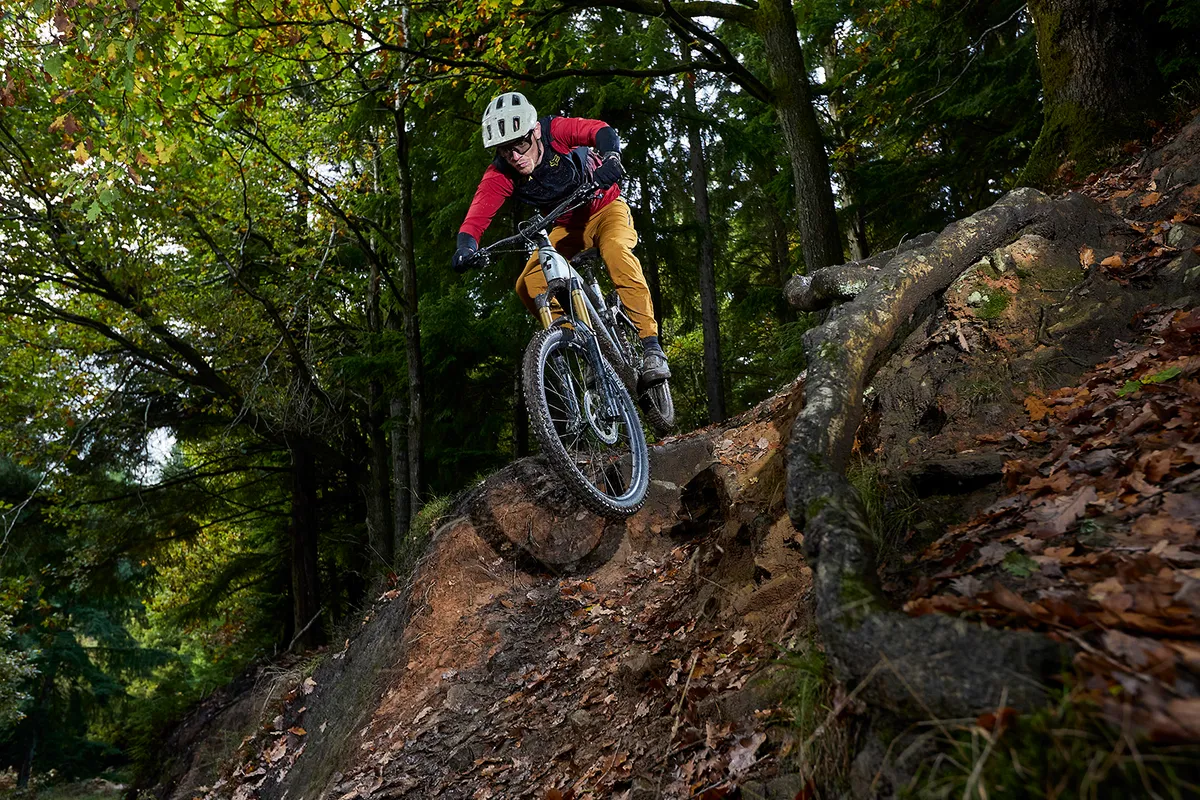
Pointing downhill, the Cube’s relatively steep (in the context of enduro) head tube angle makes for a short front centre, sitting the front axle closer to the rider and creating a feel that dominates its handling.
Loud, assertive rider inputs have a significant effect on the bike’s trajectory, to the point where it can become hard to maintain any chosen line on chunky, gnarly terrain.
This gives the Stereo a nervous, almost skittish feel on steeper, faster or more technical trails.
Its steering feels twitchy, where constant micro-adjustments are needed to keep it heading in the right direction.
Putting weight on the front wheel for grip makes the whole bike feel overly responsive, which means hitting steeper sections with confidence is tricky, and, at times, an overwhelming affair.
Steep, on-the-brakes sections with sharp turns create the same twitchiness, which makes the front end feel as if it’s more likely to tuck, where the fork’s impressive damper control is close to being overwhelmed.
It’s the same story on faster trails, where the front end has a real nervousness that’s hard to keep under control.
Smaller, lighter and carefully deliberate weight shifts – whether that’s fore or aft for grip or side-to-side when cornering – are necessary to keep the Stereo 160 on track.
Riding like this is a fatiguing and overly busy affair, and riders will become tired on the Cube quicker than they would on a more stable bike.
Turning on a dime
Once the pace slows, the gradient becomes shallow or corners tighten up, the Cube is fun and engaging to ride.
That twitchiness is well suited to chopping and changing direction to weave in and out of trees.
Smaller weight shifts make the bike move more. The shapes a rider needs to make and the effort they need to put in to get it to hook a turn aren’t as big as longer, slacker bikes.
There’s nothing laborious about how the Stereo Hybrid rides tighter terrain, and if the trails you frequent are slower, flatter or twisty, you will appreciate the Cube’s agility.
Its 27.5in wheels add to its cornering prowess, where hooking around flat or banked turns feels well balanced and controlled.
The supportive suspension also plays a part here. There is plenty of resistance to push against to drive speed and grip in the turns, and this support helps maintain the bike’s geometry so further corrective movements are not necessary.
Super suspension
Suspension kinematics are a key ingredient for the Cube, because they help mitigate some of the bike’s downfalls on steep terrain.
The rear end works overtime to absorb small bumps. The shock flutters in and out of its sag point quickly and easily, helping to claw back some of the stability lost to geometry, while providing comfort.
Its progressive ramp-up also feels great. Heavy, flat landings are absorbed with impressive composure, and although the shock’s O-ring indicates it bottoms out while descending, no abrupt full stops are felt.
There’s plenty of pop, too. Launching off small take-offs or pumping through compressions feels rewarding.
That pop and efficient suspension action makes it possible to generate speed from the ground, where energy from rider inputs is almost on a par with increases in bike speed.
A raw ride
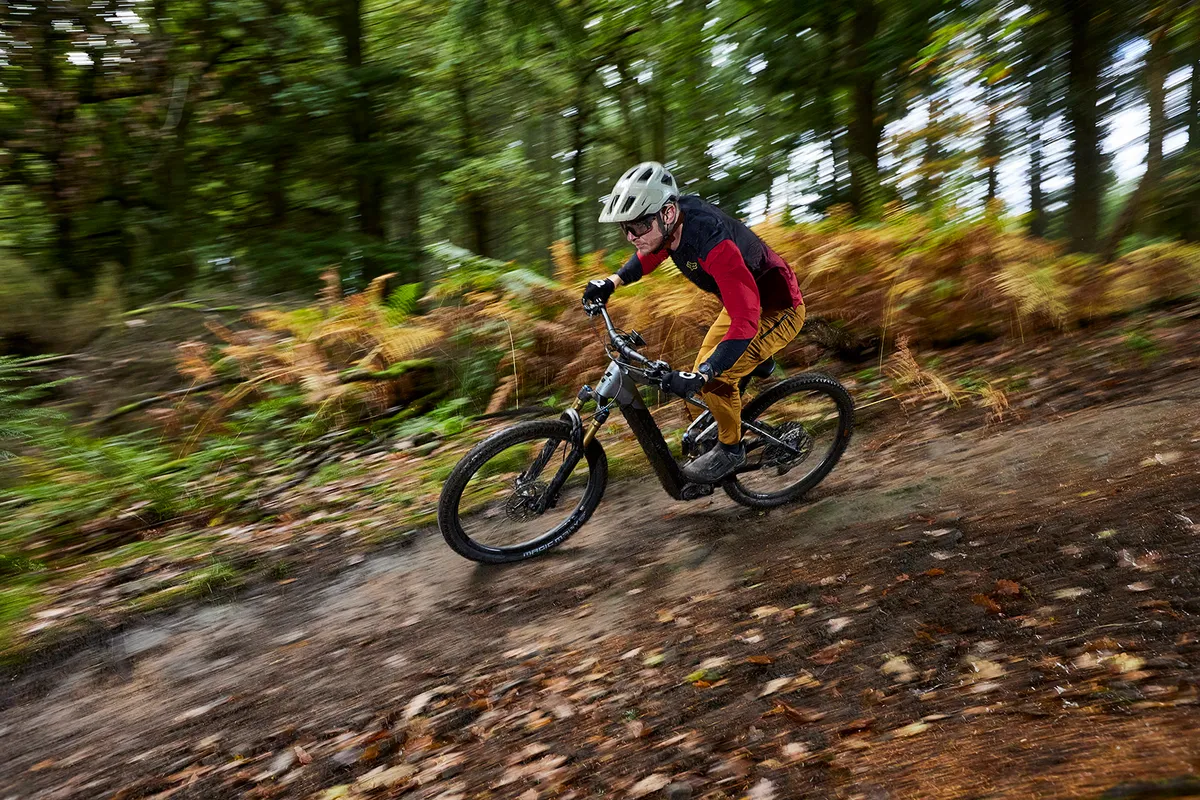
Despite the suspension’s best efforts to smooth out the Stereo’s ride, there is an element of harshness in the way it feels.
High-frequency, low-volume bumps – such as embedded stones in a worn-out trail centre surface – resonate through the bars, frame and pedals.
Although the higher than usual tyre pressures required to keep the thin carcasses from squirming in high-load corners play a part, they aren’t the only contributor.
Whether this rawness is caused by the carbon fibre frame, wheels or bar, or a combination of all three, is hard to diagnose definitively, but there’s no denying how it feels.
Regardless of the root cause, out on the trail the roughness increases fatigue rates. It also makes the bike even trickier to control because it’s unable to insulate the rider from the trail in the way other more refined-feeling bikes can.
This is much less of an issue on smoother, loamier trails, where bump frequency is lower. When riding freshly built loam trails, the Cube’s harshness is well masked, and if those trails are tighter or slower, the Stereo is a fun bike to ride.
Rapid rubber
Despite the Magic Mary and Big Betty combination using the Addix Soft compound, on hard trail-centre surfaces or damp rocks and roots there's a lack of grip.
In the same way lower tyre pressures aid smoothness, they also improve grip, but compromise tyre stability and puncture resistance.
Run at respectable pressures – 24psi front, 26psi rear – that are lower than I usually operate, there's still a level of unpredictability to the Schwalbe tyres.
The Addix Soft compound is usually a class-leader on most surface types, but when combined with the skittish handling caused by conservative geometry, stiff and responsive frame and wheels, and high tyre pressures, grip is poor.
Performance is better over softer ground, because the chunky knobs can bite into it rather than slide over the top.
How does the Cube Stereo Hybrid 160 HPC SLT 750 27.5 compare to the Vitus E-Sommet VRX?
Although the Stereo Hybrid and E-Sommet VRX are the brands’ respective range-toppers, thanks to Vitus’ direct-to-consumer sales model prices couldn’t be more disparate.
Retailing for £5,499.99, the Vitus looks like a veritable steal compared to the Cube. But even if value was totally disregarded, there’s still a performance chasm between the two bikes.
Where the E-Sommet feels natural and easy to ride quickly, not lacking in confidence, the Cube has a perched, riding on a knife-edge feel that’s tricky to master or rectify with spec or setup changes.
While the 27.5in front and rear wheels don't limit the Cube’s performance, neither does the in-fashion mullet setup (29in front, 27.5in rear) on the Vitus. It’s the tyres that make a bigger difference here.
The E-Sommet’s Maxxis MaxxGrip DoubleDown Assegai defeats the Stereo’s Magic Mary Super Trail Addix Soft hands down in all conditions.
The Cube’s carbon fibre frame will appeal to some, and it certainly looks and feels more refined than the Vitus’ alloy tubes. Likewise, the Cube’s cable-routing details (such as via the bike’s main pivot) and battery cover surpass the basic versions on the E-Sommet.
However, if the real test is in how the bikes ride, the Vitus is a country mile ahead of the Cube and is exactly where I would be spending my money.
Cube Stereo Hybrid 160 HPC SLT 750 27.5 performance details
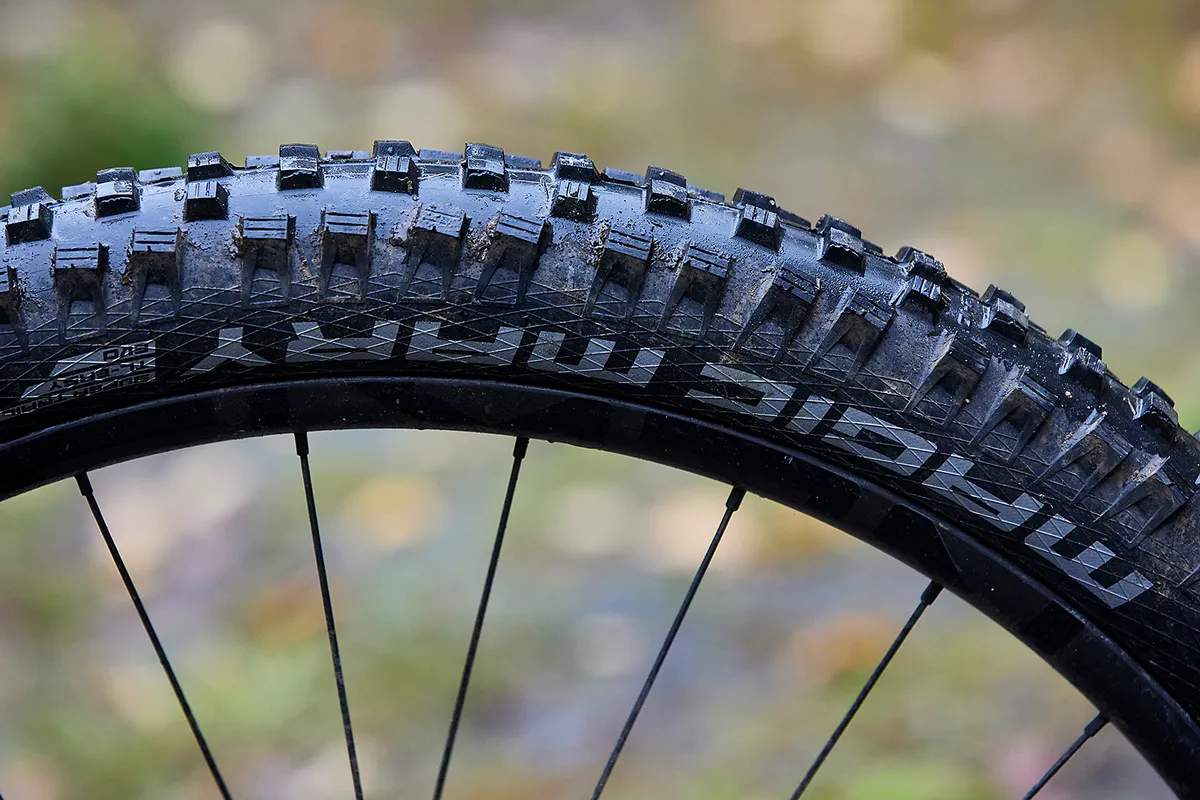
- Schwalbe Super Trail tyres: Although both tyres use Schwalbe’s Addix Soft compound – the brand’s second softest – the sidewalls are the skinnier Super Trail versions. While these aren’t the thinnest, they aren’t particularly adapted to the rigours of ebiking, where sidewall stability and puncture protection should be prioritised. They help reduce the bike’s weight, but on an ebike weight reduction shouldn’t play second fiddle to performance. Higher pressures are needed to help mitigate against the skinny sidewall’s downfalls, but this reduces grip and increases bump and vibration transmission.
- Battery cover rattle: The single-button release mechanism makes for easy access, but it doesn’t push ‘home’ as tight as it should to stop rattling. The bike rattled significantly on rough terrain, detracting from the otherwise premium look and feel.
- Magura MT7 brakes: These have plenty of power and feature lever-reach and bite-point adjustment. However, the SRAM Matchmaker and I-Spec style shifter and dropper post lever adaptors have limited adjustment. This made getting the dropper lever and shifter set to a usable position impossible. Swapping the brake lever clamps from left to right helped but didn’t fix the issue.
- Headset cable routing: Routing the cables via the headset makes the frame’s head tube and down tube junction look sleeker, but it can also cause premature wear of headset bearings because the elements can more easily reach them. It also limits owners to compatible headsets without ‘backup’ cable-routing ports.
Cube Stereo Hybrid 160 HPC SLT 750 27.5 bottom line
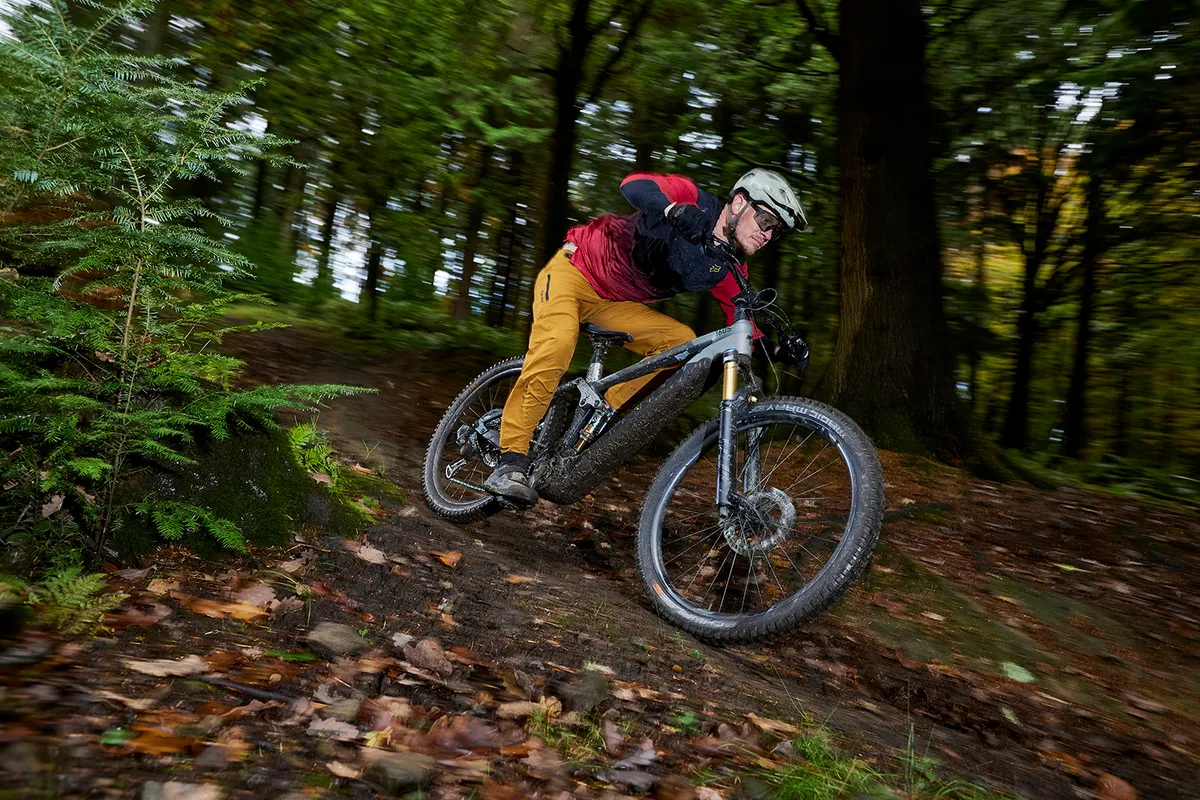
The range-topping Cube Stereo Hybrid has several notable shortcomings that hamper performance.
Much care, patience, precision and control are needed to get the bike to ride as well as its spec list and price tag suggest it should.
While it’s possible to upgrade your way out of some of the issues – such as getting thicker tyre casings or changing the wheels and bars to reduce stiffness – little can be done to make its geometry more suited to the enduro-style riding Cube claims it's designed for. Combined, these issues seriously limit the Stereo’s potential.
If you ride tighter, flatter trails, then it will perform well, but that’s not the type of terrain it’s been designed for.
For that reason, I'd struggle to recommend the Stereo Hybrid to enduro-specific ebikers who are looking for a controlled, calm and composed ride in the roughest, gnarliest terrain.
Product
| Brand | cube_bikes |
| Price | 8499.00 EUR,8499.00 GBP |
| Weight | 24.1700, KILOGRAM (L) - without pedals |
Features
| Fork | Fox Float 38 Factory, 170mm (6.69in) travel |
| br_stem | Cube Performance Stem E-MTB, 45mm |
| br_chain | SRAM XX1 Eagle |
| br_frame | C:62 Monocoque Advanced Twin Mold Technology front triangle, 6061-T6 aluminium rear triangle, 160mm (6.29in) travel |
| br_motor | Bosch Performance Line CX SmartSystem / PowerTube 750 |
| Tyres | Schwalbe Magic Mary Super Trail Addix Soft 27.5x2.4in f, Schwalbe Big Betty Super Trail Addix Soft 27.5x2.4in r |
| br_brakes | Magura MT7, 203/203mm rotors |
| br_cranks | e*thirteen Plus, 36t |
| br_saddle | Natural Fit Venec |
| br_wheels | Newmen Advanced SL A.30 |
| br_headset | ACROS AZF-1035 ICR |
| br_shifter | SRAM XX1 Eagle AXS |
| br_cassette | SRAM XX1 Eagle, 10-52t |
| br_seatpost | Fox Transfer Factory (dropper) |
| br_gripsTape | ACID Disrupt |
| br_handlebar | Newmen Advanced 318.25, 780mm |
| br_rearShock | Fox Float X Factory |
| br_availableSizes | M, L, XL |
| br_rearDerailleur | SRAM XX1 Eagle AXS (1x12) |
